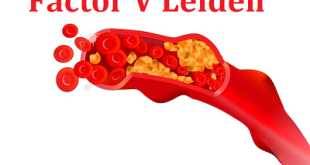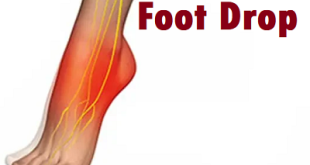Definition
Flat Feet (also known as pes planus) describes a condition in which the longitudinal (lengthwise) and/or medial (crosswise) arches of the foot are dropped down or flat. The entire bottom of the barefoot is in contact with the floor or ground surface during standing, walking, and other weight-bearing activities.
Flat feet
The condition is often present at birth (congenital) in one or both feet. When only one foot is affected, the problem is referred to as unilateral pes planus or flatfoot. When both feet are involved, the condition is bilateral flatfeet.
Pathophysiology
The medial longitudinal arch is made up of the calcaneus, navicular, talus, first three cuneiforms, and first, second, and third metatarsals. It is supported by the soft tissues of the spring ligament (plantar calcanea navicular ligament), deltoid ligament, posterior tibial tendon, plantar aponeurosis, and flexor hallucis longus and brevis muscles.
Dysfunction of any portion of the medial longitudinal arch may result in acquired pes planus. The main factors that contribute to an acquired flat foot deformity are excessive tension in the triceps surae, obesity, posterior tibial tendon dysfunction, or ligamentous laxity in the spring ligament, plantar fascia, or other supporting plantar ligaments. It may also result from a tight Achilles tendon or calf muscle.
Rigid pes planus is rare. It usually develops during childhood, but it can occur at any point in life. It develops from the tarsal coalition, accessory navicular bone, congenital vertical talus, or other forms of congenital hindfoot pathology.
Types of Flat Feet
There are three types of flatfoot:
Flexible flatfoot: Most children with flatfoot have this type, and it affects both feet. It is not painful and does not need treatment.
Flexible flatfoot with a short Achilles tendon: This rarely happens to young children. It also affects both feet. It can cause pain and disability, eventually leading to arthritis.
Rigid flatfoot: This is the least common type of flatfoot. It affects people who have problems with the bones in their feet, and about one in four has pain and disability. It may affect one or both feet.
Risk factors
Flat feet problems are more common in women than in men.
Other major factors that may increase your risk for adult flat feet include:
- Diabetes
- High blood pressure (hypertension)
- Obesity
- Traumatic injury
- Arthritis
- Age
Causes of Flat Feet
It is more caused by loose joint connections and baby fat between the foot bones. These conditions make the arch fall when your child stands up. This is why you sometimes hear flat feet called “fallen arches.” The feet may look like they have arches when your child is sitting or when the big toe is bent backward. But the arch flattens when your child puts weight on the foot.
Rarely, it can be caused by foot bones that are joined together.
In adults, a number of things can cause flat feet. Adult-acquired causes include:
Your tendons: Tendons offer support to your arches. If you tear a tendon or even weaken it over time, it can cause flat feet.
Rheumatoid arthritis: This type of arthritis can progressively cause deformities in your joints. These deformities can cause flat feet.
Broken bones: Damaging bones in your midfoot can cause flat feet.
Ligament injuries: Ligaments support your bones. An injury to these can impact your joints, which can cause flat feet.
Injuries caused by flat feet
Whether you have flat feet naturally or fallen arches because of an injury or other condition, both can cause many of the same injuries and problems including tired feet, foot pain, ankle swelling, and overpronation. While many of these flat foot problems and injuries can be addressed easily with the right insoles, avoiding them altogether is the goal.
Flat feet can cause:
- Tired feet– When your feet feel fatigued after you’ve been on them, and especially at the end of the day.
- Foot pain– Pain can occur over the length of the foot or in isolated areas. Pain typically occurs inside the ankle, on the outer edge of the foot, in the heel (known as plantar fasciitis) or in the arch itself.
- Swelling along the inside of your ankle can make footwear uncomfortable.
- An altered placement of the foot on the ground that can cause pain in the calf, knee, thigh, hip, and lower back.
- Overpronation, or the excessive rolling inward of the foot.
Flat Feet Symptoms
Depending on the cause of the flatfoot, a patient may experience one or more of the different symptoms below:
- Pain along the course of the posterior tibial tendon which lies on the inside of the foot and ankle. This can be associated with swelling on the inside of the ankle.
- Pain that is worse with activity. High intensity or impact activities, such as running, can be very difficult. Some patients can have difficulty walking or even standing for long periods of time.
- When the foot collapses, the heel bone may shift position and put pressure on the outside ankle bone (fibula). This can cause pain on the outside of the ankle. Arthritis in the heel also causes this same type of pain.
- Patients with an old injury or arthritis in the middle of the foot can have painful, bony bumps on the top and inside of the foot. These make shoewear very difficult. Occasionally, the bony spurs are so large that they pinch the nerves which can result in numbness and tingling on the top of the foot and into the toes.
- Diabetics may only notice swelling or a large bump on the bottom of the foot. Because their sensation is affected, people with diabetes may not have any pain. The large bump can cause skin problems and an ulcer (a sore that does not heal) may develop if proper diabetic shoewear is not used.
Complications of Flat Feet
Some people with flat feet experience complications when there is a delay in the treatment. Individuals with foot and ankle problems may find that flat feet can worsen the symptoms. Flat feet can lead to complications, such as:
- Flat feet can impose extra pressure on the muscles and joints of the foot.
- Flat feet can cause shin splint, a condition that causes pain along the inner edge of the tibia (shin) bone. Athletes with flat feet are more like to develop tibial stress fractures.
- People with flat feet who wear improperly fitted shoes develop a condition known as bunions. It is a condition that affects the joint at the base of the big toe.
- Flat feet can increase the risk of tendinitis, which affects the Achilles tendon due to the increased stress on the heel and ankle.
- Flat feet may cause a hammertoe, a condition where a deformity occurs due to a curl or bend in the toe. Hammertoe occurs due to an imbalance in the muscles or ligaments that hold the toe straight.
Diagnosis and test
While flat feet can usually be self-diagnosed, the underlying cause may require investigation by a foot specialist known as a podiatrist. This may involve a visual exam as well as imaging tests to evaluate the structure of the foot.
Flat feet
Visual Examination
A podiatrist can usually diagnose flat feet by looking at your feet while standing. Among some of the visual tests used:
- The wet footprint test is performed by wetting the feet and standing on a smooth, level surface. The thicker the print between the heel and ball of the foot, the flatter the foot. By contrast, a high-arch foot would leave only a narrow print of the outer foot.
- The shoe inspection test can provide evidence of faulty foot mechanics. If you have flat feet, there will be more wear on the inside of your sole, especially in the heel area. The shoes upper will also tend to lean inward over the sole.
- The “too many toes” test is performed as the doctor stands behind you and counts the number of toes peeking out to the sides. While only the pinky toe would be seen in people with normal pronation, three or four may be seen in those who overpronate.
- The tiptoe test is used to see if you have flexible or rigid flat feet. If a visible arch forms when you stand on your toes, you have flexible flat feet. If not, your doctor would likely recommend treatment for a rigid flat foot.
Imaging Tests
If you are experiencing a lot of foot pain, your doctor may order imaging tests to help pinpoint the underlying cause. Among the imaging tests used:
- X-rays and computed tomography (CT) scans are ideal for diagnosing arthritis and evaluating irregularities in the angle and/or alignment of the foot bones.
- Ultrasound can be used to produce detailed images of soft tissue damage, such as a ruptured tendon.
- Magnetic resonance imaging (MRI) can provide detailed images of bone and soft tissue damage, ideal for people with rheumatoid arthritis, tendonitis, or an Achilles heel injury.
Treatment of Flat Feet
Treatment for flat feet may range from noninvasive options to surgical intervention to help relieve foot pain and improve function for patients.
If you suspect you have flat feet, doctors recommend an examination and treatment as soon as possible. Treatment in the early stages of flat feet can prevent progression to the later stages.
Nonsurgical Treatment
If you experience symptoms with flexible flatfoot, doctors may recommend nonsurgical treatment options, including:
Activity modifications: Cut down on activities that bring you pain and avoid prolonged walking and standing to give your arches a rest.
Weight loss: If you are overweight, try to lose weight, as putting too much weight on your arches may aggravate your symptoms.
Orthotic devices: Doctors can provide you with custom orthotic devices for your shoes to give more support to the arches.
Immobilization: In some cases, it may be necessary to use a walking cast or to avoid weight-bearing completely.
Medications: Nonsteroidal anti-inflammatory drugs (NSAIDs), such as ibuprofen, help reduce pain and inflammation.
Physical therapy: Ultrasound therapy or other physical therapy modalities may be used to provide temporary relief.
Shoe modifications: Wearing shoes that support the arches is important for anyone who has flatfoot.
Orthotic insole arch support
Surgical procedures to correct flatfoot include:
- Repairing a stretched or torn tendon.
- Fusing one or more of the bones in the foot or ankle together.
- Cutting and reshaping a bone to correct alignment.
- Using a piece of one tendon to lengthen or replace another.
Flat Feet Prevention
- You can wear comfortable and supportive shoes that are designed to completely support the arch and heel.
- If you add insoles to your shoes, you are providing extra support and comfort for the arch of your foot.
- There is also the option of investing in custom orthotics that helps distribute and minimize the pressure in your foot.
- If these methods of treatment are not helping, then surgery can be an option to lessen your pain.
 Diseases Treatments Dictionary This is complete solution to read all diseases treatments Which covers Prevention, Causes, Symptoms, Medical Terms, Drugs, Prescription, Natural Remedies with cures and Treatments. Most of the common diseases were listed in names, split with categories.
Diseases Treatments Dictionary This is complete solution to read all diseases treatments Which covers Prevention, Causes, Symptoms, Medical Terms, Drugs, Prescription, Natural Remedies with cures and Treatments. Most of the common diseases were listed in names, split with categories.








what are the treatment for flat feet
Please have a glance at the post in the treatment and therapy section for flat feet.
How to treat limp pain?
If injury and pain is the suspected cause of limp, over-the-counter pain medication like ibuprofen (Advil, Motrin) or other NSAIDs may help. It would be better to consult a doctor before taking medicines.
I have limp pain and need ur help how to treat it?
If you’re experiencing persistent limb pain, it’s essential to consult with a healthcare professional for an accurate diagnosis and appropriate treatment. The cause of limb pain can vary and may include issues related to muscles, joints, nerves, or other underlying health conditions. Treatment options may range from rest, physical therapy, and medications to more specialized interventions depending on the specific cause of the pain. Seeking professional medical advice will help determine the most effective approach for your situation.
Hi, I have severe heel pain and I have flat feet. How can I get relief from the heel pain? I’m working on my feet a lot.
To alleviate severe heel pain associated with flat feet, consider wearing supportive footwear with proper arch support and using orthotic insoles. Engage in regular stretching exercises for the calves and Achilles tendon, and apply ice to the affected heel to reduce inflammation. Allow adequate rest, manage weight, and use over-the-counter pain relievers as directed. If the pain persists, consult with a healthcare professional for a thorough evaluation and personalized treatment plan.